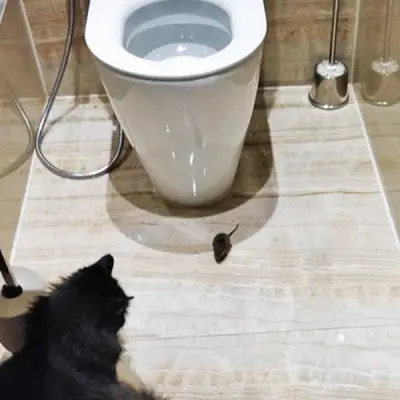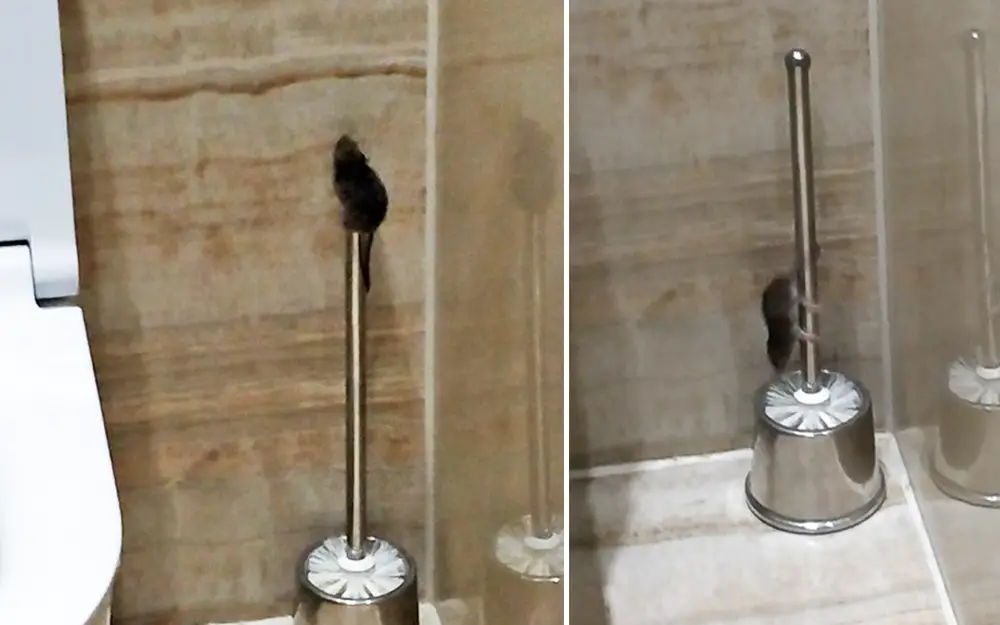Both creatures look incredibly similar (hence the question) but first let’s just clear up the common notion that mice are just small rats or that mice and rats are the same thing (yes, we hear this regularly…)
Mice and rats are completely different species.
Within UK urban areas, ‘mice’ will be mus musculus or the ‘House mice’ – this may change to apodemus sylvaticus or ‘Field mice’ in more rural areas.
Anywhere in the UK, ‘rats’ will be rattus norvegicus or the Norway rat whether they are above ground, in roofs, under floors or in drains – the endemic species rattus rattus is now so rare it’s not worth considering unless you are living on a remote offshore Scottish island.
Primary habitat for House mice are houses – they typically are born, live, breed and die all within the building fabric and often never venture outside.
Primary habitat for Norway rat is the waste water network (or sewers) – they will live externally above ground though too.
Both are nocturnal creatures, both are commensal rodents.
One is a natural predator of the other so generally you won’t find the two species co-existing (although sometimes they will happily infest different parts of a house provided they don’t meet – for example rats under the floor and mice in the loft).
Rats are much bigger than mice – 250g versus 20g for adults.

However juvenile rats – something in the region of 2-4 weeks old – look very similar size-wise to mice and hence we very often see the wrong species targeted due to people believing that they only have a mice problem.
Should you have the opportunity to carefully inspect one, you will note that juvenile rats will have larger feet and a larger head comparatively when viewed next to an adult House mouse – the ears will be smaller and the tail shorter/thicker.
Colours vary enormously in both species from blacks through to browns and greys so this is not anything to make an assumption on.
Contrary to popular belief too, rats are not always wet from living in the sewers – their greasy hair is quite resistant to water in a similar manner to why ducks never look wet (even in the rain).
Both species will speak the same language of squeaks and both species will produce the same style of droppings (although again subtle differences are present to be differentiated by the rodent connoisseur).
So if you are unfortunate enough to come across something ‘mouse-like’ in your property, first question to ask is whether it is actually a mouse or whether it’s a juvenile rat.
Once you have that professionally confirmed (we can help with this), then you know what action to take as if it’s juvenile rats then the first thing to check is the drains as that is the primary habitat for rattus norvegicus – if it’s definitely mice then don’t bother with drainage at all.
However the way the rats move between pipes and building fabrics and indeed through building fabrics up to ground level is complex and amazingly ill-understood (even by pest controllers) – so a standard ‘condition report’ from a drainage contractor is unlikely to capture the full story (or any aspect of it all sometimes).
Only Pestology surveys are undertaken by both qualified pest controllers AND qualified drainage engineers who solely deal in this fascinating niche area.
Only Pestology surveys involve the comprehensive investigative work to cover the drainage, building construction and building architecture diversities with sufficient understanding and experience to be able to best advise our customers on how to get rat free for good.


